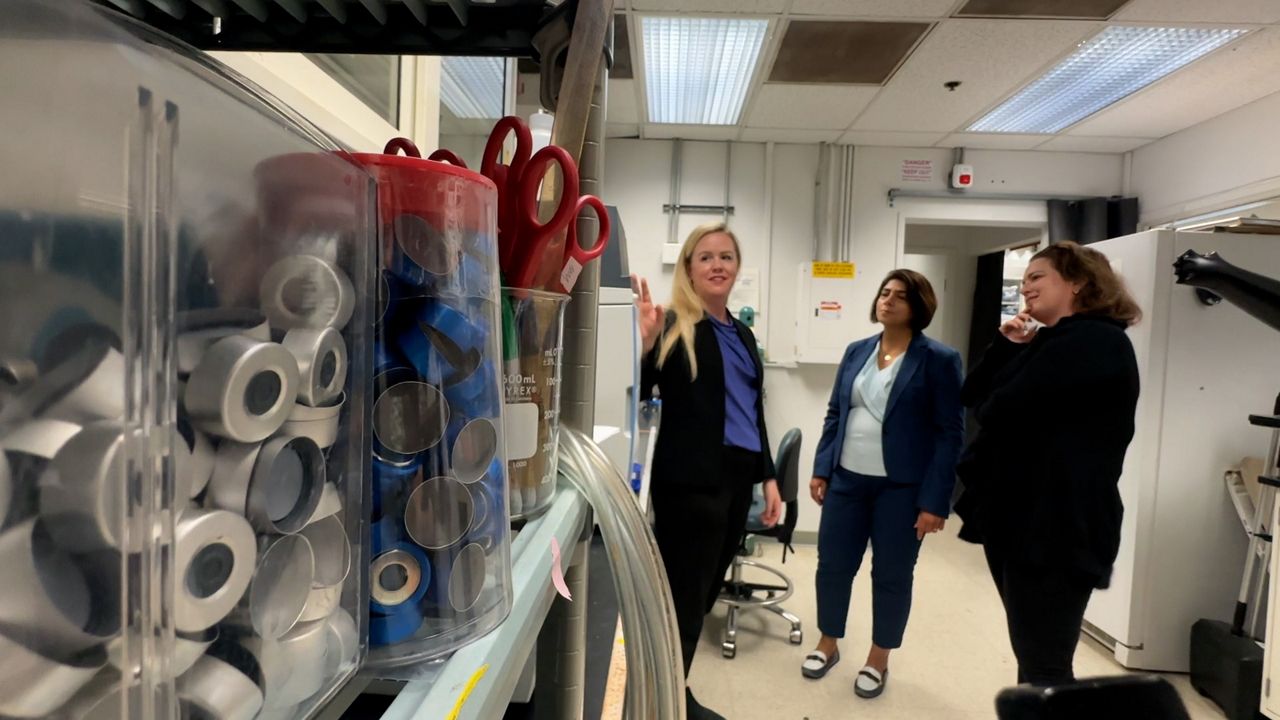LOS ANGELES — Growing up in East LA, Cathy Trejo never imagined herself going into science let alone working on anything related to Mars, and yet here she is, spending her days in front of an intricate collection of packed tubes and thin hoses — a flow experiment she’s constructed at NASA’s Jet Propulsion Laboratory in Pasadena where she is currently a graduate student research intern.
“Up until this internship, I never thought anything to do with Space or with NASA,” she said of the career path she expected to follow. “I was always really interested in learning how to help Earth and the community that we have here, and really interested in the applications of removing contamination and pollution from our water.”
Using minerals and organic compounds found on both planets and a lot of complicated words that she casually dispenses like “Polycyclic aromatic hydrocarbons,” she’s trying to determine if pollutants from things like burning fuel and forest fires end up contaminating water that flows through the soil. It’s an interplanetary study with very terrestrial implications.
“We're drinking this water. We shower with this water. We have our families playing this water,” she explained, adding how storm drainage leads to the beach, another place where people can come in contact with the possible carcinogens she’s tracking.
Her experiment is being done at JPL’s Origins of Habitability Lab, led by Dr. Laurie Barge and Dr. Jessica Weber.
“We study the emergence of life and ways that we can look for life on other worlds,” Barge said.
Astrobiology wasn’t always her focus, although she did dream of working for NASA for years, ever since she saw Voyager pass Neptune on the news when she was younger. Weber, meanwhile, trained as a chemist.

“I didn't really know until much later in my career that NASA was interested in chemistry,” she recalled, “and so I kind of stumbled into a little bit. I collected rocks as a kid and was very interested in stuff like that, but it took me a while to figure out…that NASA would have interest in this and that I could really fit into the bigger system.”
It’s a discovery she’s hoping to help future scientists make through a partnership with Cal State LA, one that seeks to identify students in other disciplines and introduce them to their field.
“There's a lot of students who are really excellent, but they may not know about astrobiology,” Barge said. “And so that's part of why we started this collaboration, to try to relate astrobiology to more traditional fields, such as environmental engineering and civil engineering.”
The latter happens to be the specialty of Dr. Arezoo Khodayari, an associate professor at Cal State LA who helped develop the partnership. Most of her students, she says, are looking for ways to make a difference in their community. Outer space is out of mind, but she’s hoping to get them to think outside the box, way outside the box — 78 million miles away.
“Every discipline, you can [relate] to other disciplines if people are open to explore all those intersections,” she explained. “Planetary science, environmental engineering or water treatment, they all have chemistry in common.”
This ongoing partnership to use planetary science to address environmental pollution on earth is one of several projects that NASA is funding as they try to attract students from diverse backgrounds and disciplines. The hope is that, like Trejo, these young scientists may stumble on a new career frontier they hadn’t considered.
“There's so much more than just, 'Oh, space and just Mars,'” Trejo said. “It's a lot more detailed. It's a lot more interdisciplinary. And I know now that there's a space for me here too.”



